Sost, independent of the non-coding enhancer ECR5, is required for bone mechanoadaptation
- Indiana Univ. School of Medicine, Indianapolis, IN (United States); Indiana Univ./Purdue Univ. at Indianapolis, Indianapolis, IN (United States)
- Indiana Univ. School of Medicine, Indianapolis, IN (United States)
- Univ. of California, Davis, CA (United States)
- Lawrence Livermore National Lab. (LLNL), Livermore, CA (United States)
- Lawrence Livermore National Lab. (LLNL), Livermore, CA (United States); Univ. of California at Merced, Merced, CA (United States)
Here, sclerostin (Sost) is a negative regulator of bone formation that acts upon the Wnt signaling pathway. Sost is mechanically regulated at both mRNA and protein level such that loading represses and unloading enhances Sost expression, in osteocytes and in circulation. The non-coding evolutionarily conserved enhancer ECR5 has been previously reported as a transcriptional regulatory element required for modulating Sost expression in osteocytes. Here we explored the mechanisms by which ECR5, or several other putative transcriptional enhancers regulate Sost expression, in response to mechanical stimulation. We found that in vivo ulna loading is equally osteoanabolic in wildtype and Sost–/– mice, although Sost is required for proper distribution of load-induced bone formation to regions of high strain. Using Luciferase reporters carrying the ECR5 non-coding enhancer and heterologous or homologous hSOST promoters, we found that ECR5 is mechanosensitive in vitro and that ECR5-driven Luciferase activity decreases in osteoblasts exposed to oscillatory fluid flow. Yet, ECR5–/– mice showed similar magnitude of load-induced bone formation and similar periosteal distribution of bone formation to high-strain regions compared to wildtype mice. Further, we found that in contrast to Sost–/– mice, which are resistant to disuse-induced bone loss, ECR5–/– mice lose bone upon unloading to a degree similar to wildtype control mice. ECR5 deletion did not abrogate positive effects of unloading on Sost, suggesting that additional transcriptional regulators and regulatory elements contribute to load-induced regulation of Sost.
- Research Organization:
- Lawrence Livermore National Laboratory (LLNL), Livermore, CA (United States)
- Sponsoring Organization:
- USDOE
- Grant/Contract Number:
- AC52-07NA27344
- OSTI ID:
- 1377785
- Report Number(s):
- LLNL-JRNL--691137; PII: S8756328216302472
- Journal Information:
- Bone, Journal Name: Bone Journal Issue: C Vol. 92; ISSN 8756-3282
- Publisher:
- ElsevierCopyright Statement
- Country of Publication:
- United States
- Language:
- English
Similar Records
Mef2c regulates bone mass through Sost-dependent and -independent mechanisms
Conditional Deletion of Sost in MSC-Derived Lineages Identifies Specific Cell-Type Contributions to Bone Mass and B-Cell Development: DELETION OF Sost IN MSC-DERIVED LINEAGES
